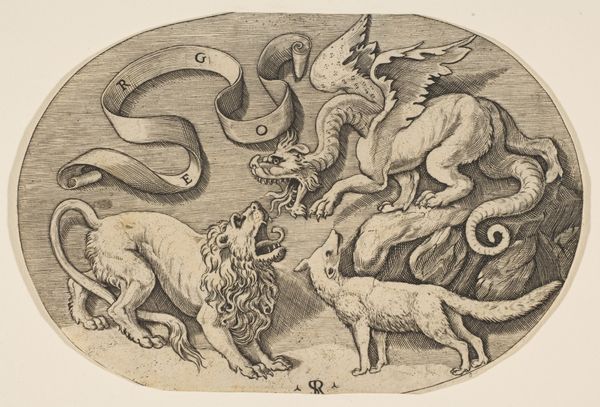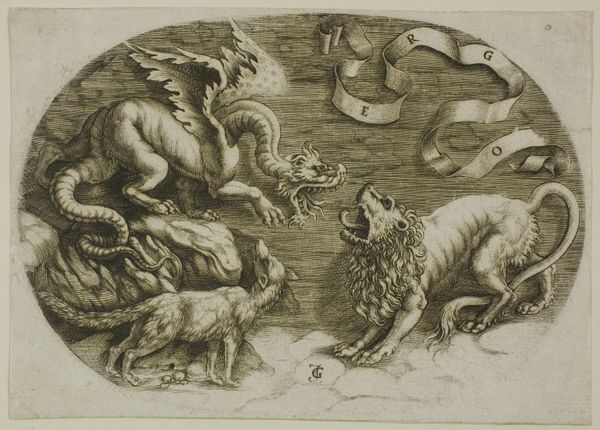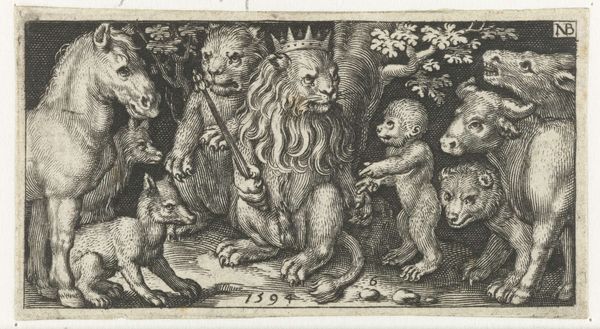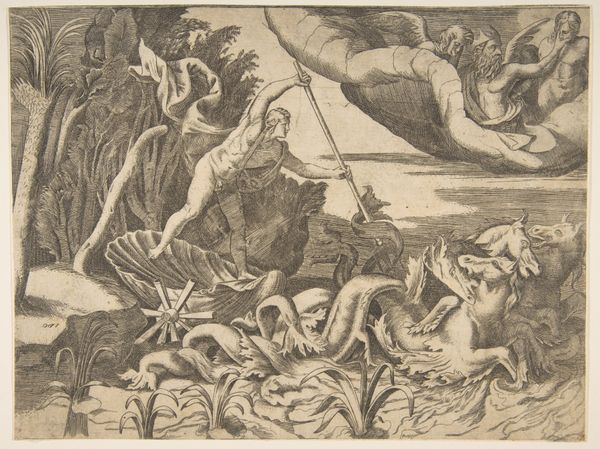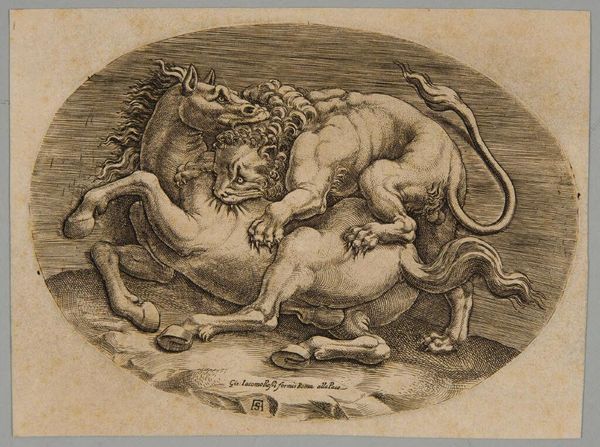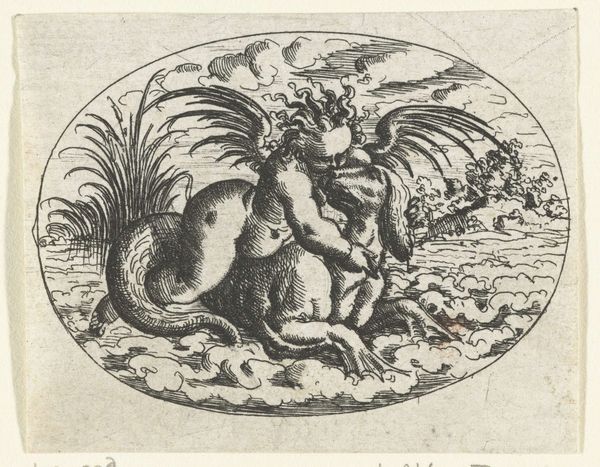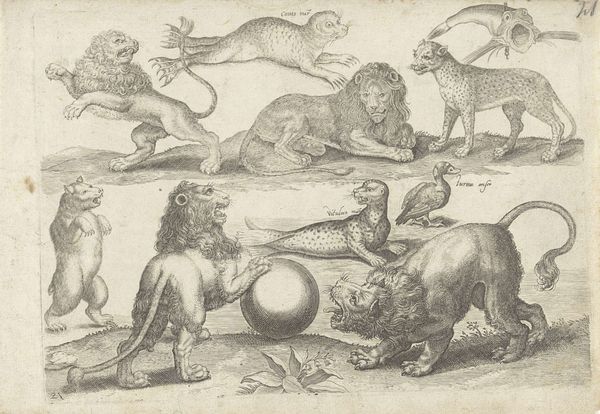
drawing, print, metal, engraving
#
drawing
#
allegory
#
animal
# print
#
metal
#
fantasy-art
#
figuration
#
11_renaissance
#
line
#
northern-renaissance
#
engraving
Dimensions: height 115 mm, width 159 mm
Copyright: Rijks Museum: Open Domain
Marco Dente made this print, Vos, leeuw en draak, probably in Italy around 1520, using a technique called engraving. Engraving is an intaglio process, meaning the image is incised into a metal plate, in this case likely copper. The artist would have used a tool called a burin to physically cut lines into the surface. Ink is then applied, filling the grooves, and the surface is wiped clean. Finally, paper is pressed against the plate with considerable force, transferring the ink and creating the print. Look closely, and you can see the characteristic crisp lines that define the forms of the fox, lion, and dragon, each rendered with meticulous detail. This wasn't just a technical exercise, though. The printmaking processes allowed Dente to disseminate imagery widely. Prints like this were relatively affordable, and contributed to a growing visual culture and market. Paying attention to these materials, making, and context helps us appreciate the full meaning of the work. It also challenges traditional distinctions between fine art and craft.
Comments
No comments
Be the first to comment and join the conversation on the ultimate creative platform.
